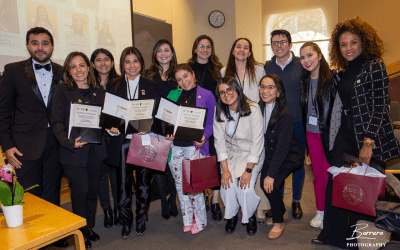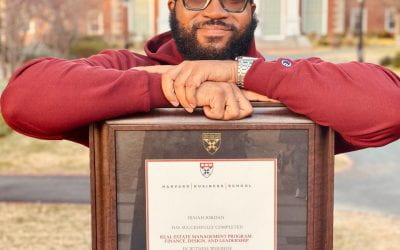
About the Author
Mackinley “Mack” FitzPatrick is a Ph.D. student in Archaeology at Harvard University. His primary research interests revolve around ancient media, specifically record-keeping systems such as the Andean khipu. Currently, his research is centered on the examination and analysis of a set of 32 khipus from the site of Laguna de los Cóndores, situated in the northern highland jungle of Peru.
Why Knot Chacha?
A Summer with the Khipus of Lagunas de Los Cóndores
While researching how to get to the town of Leymebamba, Peru, where I would be working in the community museum for the summer, I was met with three options. One, fly to Jaen in the lower Peruvian jungle, and then drive several hours back up into the highland jungle where Leymebamba sits. Two, fly into Cajamarca, Peru, and then drive all day along narrow cliffside roadways on what I have heard locals semi-jokingly call “el camino de la muerte.” Three, fly into the regional capital of Chachapoyas, landing on a short mountain top runway before driving the remaining two hours. While it wasn’t the cheapest of the three options, I ultimately chose to fly to Chachapoyas, both the capital and namesake for the region that Leymebamba is located in. I was lucky enough to secure a seat next to the window, and watched as I climbed above the panza de burro, leaving Lima behind, and made my way over the top of la sierra. Eventually, I was met with the lush green highland jungle that makes up the Chachapoyas region. As we descended into our landing, I noticed both ends of the runway just barely fit along the top of a small plateau amongst the mountains. The airport itself, while not the smallest I’d ever seen, reminded me of the Lego airport model that I had always dreamed of owning as a kid.

Walking off the tarmac at the Chachapoyas airport.
I spent the next few hours in a taxi, twisting down into the valley and then back up again before arriving in Leymebamba. I had been here once before, in the summer of 2019, and returning felt like I was remembering parts of a dream. The museum itself lies a few minutes outside of the town of Leymebamba, higher up and tucked away near some fields. When I finally arrived at the museum, I was met by the museum’s manager, Sebastián, along with three dogs: Hercules, Hinata and Cusi. After taking my things to my room in the museum’s lodgings next door, I asked Sebastián when I could get started.
“Nos vemos a las diez,” he told me.

The view out the window of Mack’s bedroom where he stayed at the Museo Leymebamba.
The next day, I walked into Sebastián’s office with all of my equipment, eager to get to work. He looked at me, slightly puzzled, and asked me if I’d come to see the khipus.
I nodded, and he led me into one of the museum’s main galleries, which I immediately recognized from my visit to the museum several years earlier. On the wall, three incredibly beautiful and complex Inka khipus were displayed. These knotted cords served as record-keeping devices for many Andean cultures, most famously the Inka.
Since my first visit in 2019, I have been captivated by this museum’s particular set of khipus, which constitute some of the largest and most intricate extant Inka khipus. Even more spectacular is the fact that the khipus housed in this museum are some of the few khipus with archaeological provenience, and the only known khipus to securely come from the Andean highlands. Despite their apparent prolific use across the entirety of the Inka empire, most archaeological khipus in existence today come from the arid Peruvian coast. All the khipus here come from the local site of Laguna de los Cóndores, along with over 200 mummy bundles, ceramics, textiles and countless other artifacts. The site underwent an emergency excavation after its rediscovery and subsequent looting in the late 90s, and the community museum was built to house everything that was recovered.

Cords and knots found on one of the khipus recovered from Laguna de los Cóndores and housed at the Museo Leymebamba.
As I gazed upon these three khipus, the sheer enormity of the task I had set for myself here began to set in. Despite only having three khipus on display, the museum houses a total collection of 32 khipus, plus a variety of broken and loose cords. On average, it can take several days to study a single khipu closely, but this varies dramatically depending on the complexity, condition and size of the khipu.
I asked Sebastián if it would be possible to see the rest of the khipus that were in storage. He again looked slightly puzzled, and asked why I couldn’t just study the three in front of us, there in the gallery. I myself started to become confused, as I had been under the impression I would be able to work with all of the khipus in the museum’s collection. While my analyses were in no way destructive, they certainly involved careful physical manipulation and close examination of the khipus, which of course would not be possible when they were sitting behind a pane of glass.
It took me three days to solve this issue.
It turned out that Sebastián, while the primary caretaker of the museum, was not in charge of managing the collections themselves. This task was left to Wilder, another museum employee who had been away on an excavation during the first few days of my arrival. Thankfully, once he returned, I was swiftly set up with my own space to analyze and record the khipus, and I was able to get to work.
For the first few weeks of my time there, I worked alone in a small room. My day often consisted of waking up around 8:30 a.m., taking a quick shower, eating oatmeal mixed with instant coffee, and then heading into my work space around 9 a.m. For the first week, I worked primarily in silence, as I was still getting a feel for my methods and training my eye to spot unique details and differences between the khipu cords. I would spend the first four hours of the morning hunched over the table I was working at, looking through a small magnifying glass while I carefully moved the cords with my tweezers. By around 1 p.m., my back would be hurting, and I’d be ready for lunch.

Mack’s impromptu khipu lab. Click here to see a time lapse of Mack working on a khipu.
Typically I would make myself a sandwich and some tea, after which I would take a walk through the local fields near the museum to get some fresh air and to clear my head. One day, soon after I started doing this, I was joined by a companion: a small brown and black dog named Chacha. While not one of the “official” museum dogs (like the three I mentioned earlier), Chacha came and went from the museum grounds as she pleased, and she even ate with the other dogs sometimes. After asking some of the other museum workers about Chacha, I came to find out that she did apparently have an owner, though they were often out of town during the week. Despite being so young, Chacha was extremely well behaved. She would come when I called her, she was gentle when I gave her food, and when I went into town to restock my supplies she would always come with me and wait outside the store patiently. On days where I left the door open to my impromptu khipu lab, Chacha would lay just outside the door, inherently knowing that she was not allowed inside, but ready to accompany me the moment I took my next break.

Chacha the dog waiting for Mack to finish his work for the day so they can walk into town together.
After lunch, I would normally work for another four or five hours, sometimes even working until after dinner. The process was tedious, and sometimes I wondered what I had gotten myself into. Then there would be times where I’d find something unexpected, and feel a sense of sheer awe at the amazing objects I was getting to study.
Despite being alone for most of the day, it was hard to feel lonely or bored when I knew that Chacha was right outside the door, and that these objects had so much to tell me. I felt extremely privileged to have the opportunity to take a long look at each of the khipus I studied, pouring over every cord, every knot, every little twist and turn, knowing that the only other person to have done this was likely its maker over 500 years ago. Even now, back in Cambridge, I can see each khipu in my mind as if they were the faces of people I have met.

Mack carefully untangles a khipu to prepare it for mounting and study.
Eventually, I was joined by a student from a local university named Giovana. She had been recruited by Sonia, the museum’s director, to help me examine and record the khipus. I am incredibly grateful for her help and her company. I felt very lucky to have had the opportunity to teach her the knowledge I had accrued over my short academic career. It’s not every day you get to inflict your niche passion onto another person for eight hours a day, after all. I honestly cannot thank her enough for her enthusiasm and friendship.

Mack and Giovana prepping their khipu materials before a workshop with some local students.
As my time at the museum wound down, Giovana and I had the privilege of sharing our khipu knowledge with a group of local school children. They were quick learners and were eager to get their hands dirty by making their own khipus. Giovana and I designed a lesson where, after learning about the basic history and anatomy of khipus, students were able to create khipus that recorded basic information about their families.
Now back in Cambridge, I long for my lunchtime walks with Chacha as I begin to work through the 12,000+ data points I recorded this summer. I am incredibly grateful to the museum’s director, Sonia Guillen, who so generously allowed me to come and study the khipus at the Museo Leymebamba. I want to thank Sebastián, Wilder, Giovana and all the other folks who made this possible. I’m already excited to return to Leymebamba next summer, and I hope to be able to stay even longer next time. After years of being unsure of where I wanted to work or what I wanted to write about for my dissertation, suddenly it became clear: why (k)not Chachapoyas?
More Student Views
Colombian Women Who Empower Dreams
English + Español
The verraquera of Colombian women knows no bounds. This was the message left with me by the March 30 symposium, “Empowering Dreams: 1st symposium in honor to Colombian women at Harvard.”
A Review of Born in Blood and Fire
The fourth edition of Born in Blood and Fire is a concise yet comprehensive account of the intriguing history of Latin America and will be followed this year by a fifth edition.
Resilience of the Human Spirit: Seizing Every Moment
In the heart of Chicago, where I grew up, amidst the towering shadows of adversity, the lingering shadows of generational demons and the aroma of temptation, the key to the gateway of resilience and determination was inherited. The streets of my childhood neighborhood became, for many, prisons of poverty, plundering, crime and poor opportunity.




